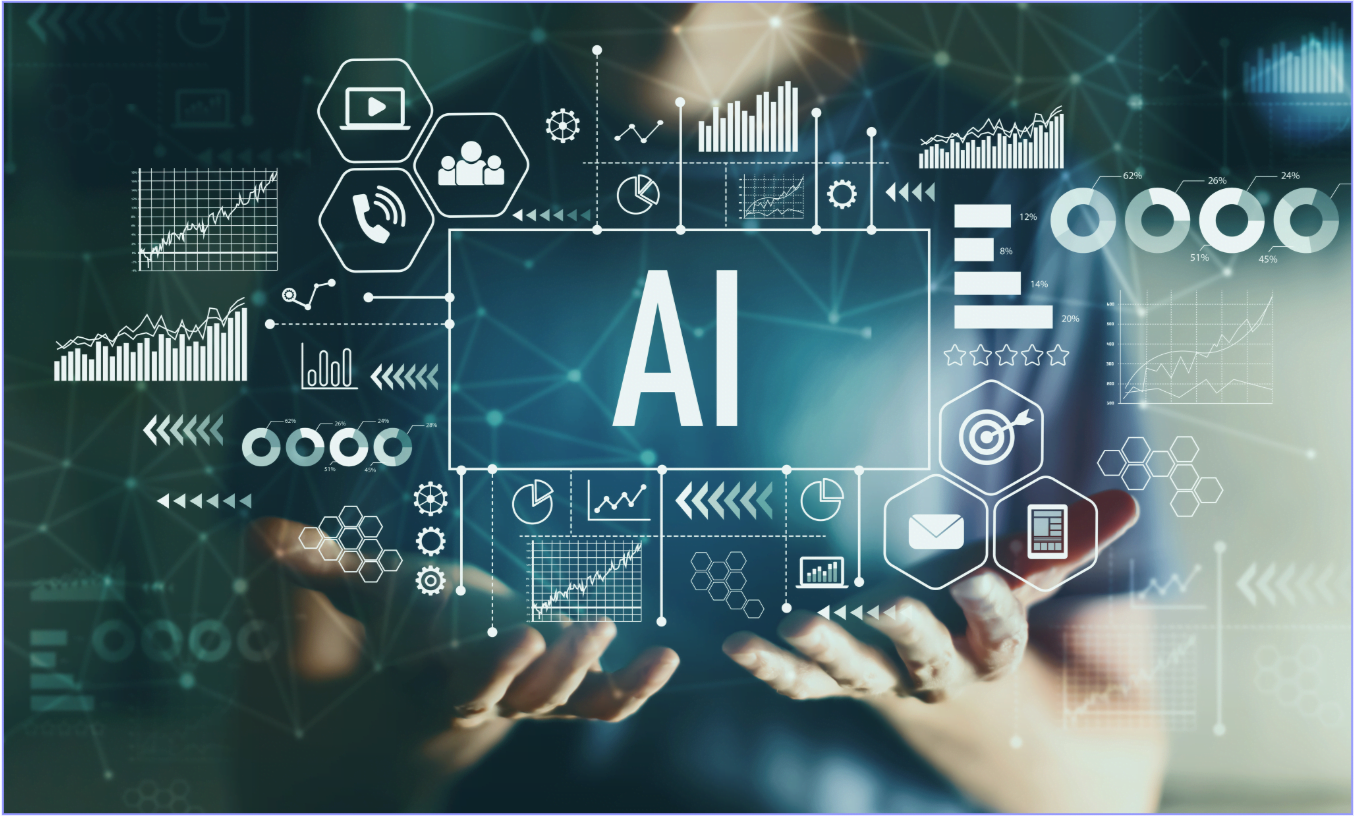The Evolution and Impact of AI Technology: Artificial Intelligence (AI) is no longer a concept confined to science fiction. Today, AI is a driving force behind technological innovation and economic growth, affecting nearly every industry and aspect of daily life. The rapid advancement and integration of AI technologies have led to significant improvements in efficiency, productivity, and innovation. This blog explores the evolution, workings, applications, ethical considerations, and future prospects of AI technology.
Understanding AI Technology
AI, or Artificial Intelligence, refers to the simulation of human intelligence in machines that are programmed to think and learn like humans. AI encompasses a range of technologies and methods, including machine learning, deep learning, neural networks, and natural language processing. These technologies enable machines to perform tasks that typically require human intelligence, such as visual perception, speech recognition, decision-making, and language translation.
Historical Background
The journey of AI began in the 1950s with pioneers like Alan Turing, who proposed the idea of machines that could simulate any aspect of intelligence. Over the decades, AI research has seen several ups and downs, from the initial excitement and promise to periods of reduced funding and interest, known as “AI winters.” However, recent advancements in computing power, data availability, and algorithmic improvements have revitalized AI research, leading to the current era of rapid development and deployment.
Key Milestones in AI Development, The Evolution and Impact of AI Technology
- 1956: The Dartmouth Conference marked the birth of AI as a field of study.
- 1960s-1970s: Development of early AI programs like ELIZA and Shakey the robot.
- 1980s: Introduction of expert systems, which used rule-based algorithms to mimic human decision-making.
- 1997: IBM’s Deep Blue defeats world chess champion Garry Kasparov.
- 2011: IBM’s Watson wins the game show Jeopardy! against human champions.
- 2012: Breakthrough in deep learning with AlexNet’s success in the ImageNet competition.
- 2016: Google DeepMind’s AlphaGo defeats Go champion Lee Sedol.
How AI Works
AI systems operate based on three core components: data, algorithms, and computing power.
Data
Data is the fuel that powers AI. Large datasets are essential for training AI models to recognize patterns and make predictions. The rise of big data has provided AI with unprecedented amounts of information to learn from, leading to more accurate and reliable models.
Algorithms
Algorithms are the mathematical formulas and rules that govern how AI systems process data. Machine learning algorithms, such as supervised learning, unsupervised learning, and reinforcement learning, enable AI systems to learn from data and improve over time. Deep learning, a subset of machine learning, uses neural networks with multiple layers to process complex data and extract intricate patterns.
Computing Power
The advancement of computing hardware, including GPUs and TPUs, has significantly accelerated AI research. These powerful processors enable the training of large and complex AI models in a reasonable timeframe, making it possible to tackle problems that were previously intractable.
Machine Learning vs. Deep Learning
Machine learning involves training algorithms to make predictions or decisions based on data. Deep learning, a more advanced form of machine learning, uses neural networks with many layers (hence “deep”) to model complex patterns in data. While machine learning can handle structured data and simpler tasks, deep learning excels in processing unstructured data like images, audio, and text.
Applications of AI in Different Industries
AI’s versatility has led to its adoption across a wide range of industries, transforming the way businesses operate and deliver value.
Healthcare
AI is revolutionizing healthcare through applications in diagnostics, personalized medicine, and drug discovery. AI algorithms can analyze medical images to detect diseases like cancer with high accuracy. Personalized medicine uses AI to tailor treatments to individual patients based on their genetic profiles. Additionally, AI-driven drug discovery accelerates the identification of potential new treatments by analyzing vast datasets of chemical compounds and biological interactions.
Finance
In the finance industry, AI is employed for fraud detection, trading algorithms, and customer service. Machine learning models analyze transaction patterns to identify and prevent fraudulent activities. High-frequency trading algorithms leverage AI to execute trades at optimal times, maximizing profits. AI-powered chatbots provide customers with instant support and personalized financial advice.
Retail
Retailers use AI to optimize inventory management, enhance customer experiences, and streamline supply chains. AI-driven demand forecasting helps retailers maintain optimal stock levels, reducing costs and minimizing waste. Personalized recommendation systems analyze customer behavior to suggest products, increasing sales and customer satisfaction. In supply chain management, AI predicts disruptions and suggests mitigation strategies, ensuring smooth operations.
Automotive
The automotive industry is at the forefront of AI innovation, particularly in the development of autonomous vehicles. AI enables self-driving cars to perceive their surroundings, make decisions, and navigate complex environments. Predictive maintenance uses AI to monitor vehicle health and predict component failures, reducing downtime and maintenance costs. Driver assistance systems leverage AI to enhance safety by providing features like adaptive cruise control and lane-keeping assistance.
Entertainment
AI is transforming the entertainment industry through content creation, recommendation engines, and virtual reality. AI algorithms generate music, art, and even scripts for movies and TV shows. Streaming platforms like Netflix and Spotify use AI to recommend content based on user preferences, increasing engagement and satisfaction. Virtual reality experiences are enhanced by AI, creating more immersive and interactive environments.
AI in Daily Life
AI has become an integral part of our daily lives, often in ways we may not even realize.
Personal Assistants
AI-powered personal assistants like Siri, Alexa, and Google Assistant help users manage their schedules, control smart home devices, and find information quickly. These assistants use natural language processing to understand and respond to voice commands, making interactions seamless and intuitive.
Smart Home Devices
AI is at the heart of smart home devices, enabling automation and enhancing convenience. Smart thermostats learn users’ preferences and adjust temperatures accordingly, saving energy and improving comfort. AI-powered security cameras detect and alert homeowners to potential threats, enhancing safety.
Social Media
Social media platforms use AI to curate content, target advertisements, and engage users. AI algorithms analyze user behavior to recommend posts, videos, and articles that are likely to be of interest. Ad targeting uses AI to deliver personalized advertisements based on users’ interests and demographics. AI also helps in moderating content, identifying and removing harmful or inappropriate material.
Education
AI is transforming education through personalized learning, automated grading, and administrative support. Adaptive learning platforms use AI to tailor educational content to individual students’ needs, helping them learn more effectively. Automated grading systems reduce the workload for educators by quickly and accurately assessing assignments. AI also streamlines administrative tasks, such as scheduling and resource allocation, allowing educators to focus more on teaching.
Ethical Considerations and Challenges
The rapid advancement of AI technology raises several ethical and societal challenges that need to be addressed.
Bias in AI Algorithms
AI algorithms can inadvertently perpetuate and amplify existing biases present in the data they are trained on. This can lead to unfair and discriminatory outcomes in areas such as hiring, lending, and law enforcement. Ensuring fairness and reducing bias in AI systems requires careful data curation, transparent algorithms, and ongoing monitoring.
Privacy Concerns
The extensive use of personal data in AI applications raises significant privacy concerns. Users may be unaware of how their data is collected, stored, and used by AI systems. Striking a balance between leveraging data for AI innovation and protecting individual privacy is crucial. Implement
ing robust data protection measures and giving users control over their data are essential steps in this direction.
Job Displacement
AI’s ability to automate tasks and processes has raised concerns about job displacement and economic inequality. While AI can create new opportunities and enhance productivity, it can also render certain jobs obsolete. Preparing the workforce for an AI-driven future through education and reskilling programs is vital to mitigate the impact of job displacement.
Ethical AI Development
Developing AI systems responsibly and ethically is paramount. This includes ensuring transparency in AI decision-making processes, accountability for AI-driven actions, and adherence to ethical guidelines. Collaboration between policymakers, researchers, and industry leaders is necessary to establish frameworks and regulations that govern AI development and deployment.
The Future of AI
The future of AI holds immense promise, with potential breakthroughs and advancements on the horizon.
Predictions for AI Advancements
Over the next decade, AI is expected to achieve significant advancements in areas such as natural language understanding, computer vision, and robotics. AI systems will become more capable of understanding and interacting with the world in ways that are increasingly indistinguishable from human behavior.
Quantum Computing and AI
Quantum computing, which leverages the principles of quantum mechanics, has the potential to revolutionize AI. It can process information at unprecedented speeds, enabling the solving of complex problems that are currently beyond the reach of classical computers. The synergy between AI and quantum computing could lead to breakthroughs in fields like cryptography, material science, and drug discovery.
Addressing Global Challenges
AI has the potential to address some of the world’s most pressing challenges. In healthcare, AI can improve disease prediction, diagnosis, and treatment, making healthcare more accessible and effective. In environmental conservation, AI can monitor and manage natural resources, combat climate change, and protect biodiversity. AI can also enhance education, agriculture, and disaster response, contributing to sustainable development and global well-being.
Preparing for an AI-Driven Future
To harness the full potential of AI, it is essential to prepare for an AI-driven future. This involves investing in AI research and development, fostering interdisciplinary collaboration, and promoting AI literacy among the general public. Education systems must adapt to equip students with the skills needed to thrive in an AI-powered world, such as critical thinking, creativity, and digital literacy.
Case Studies
Examining real-world case studies provides valuable insights into the successful implementation of AI and the lessons learned from challenges and failures.
Successful AI Implementations
- Healthcare: The use of AI in medical imaging to detect early signs of diseases like cancer has shown remarkable success. Companies like Zebra Medical Vision and Aidoc have developed AI algorithms that assist radiologists in diagnosing conditions with high accuracy, leading to better patient outcomes.
- Finance: JPMorgan Chase’s AI-powered fraud detection system, COiN, has significantly reduced false positives and improved the efficiency of fraud investigations. The system analyzes vast amounts of data in real-time, identifying suspicious activities and preventing financial losses.
- Retail: Amazon’s use of AI in its recommendation engine has revolutionized online shopping. By analyzing customer behavior and preferences, the AI system provides personalized product recommendations, driving higher sales and customer satisfaction.
Lessons Learned from AI Project Failures
- Microsoft’s Tay Chatbot: Microsoft’s AI chatbot, Tay, was designed to engage with users on social media. However, it quickly became a cautionary tale when it started generating inappropriate and offensive content due to exposure to harmful inputs. This highlighted the importance of robust content moderation and safeguards in AI systems.
- IBM Watson for Oncology: IBM Watson’s AI system for cancer treatment recommendations faced criticism for providing inaccurate and unsafe suggestions. The failure was attributed to insufficient training data and a lack of collaboration with medical experts. This underscores the need for domain expertise and rigorous validation in AI applications.
Insights from AI Research and Development Labs
- DeepMind’s AlphaFold: DeepMind’s AlphaFold has made significant strides in predicting protein structures, a challenging problem in biology. The AI system’s ability to accurately model protein folding has the potential to accelerate drug discovery and our understanding of diseases.
- OpenAI’s GPT-3: OpenAI’s GPT-3, a state-of-the-art language model, has demonstrated remarkable capabilities in natural language understanding and generation. Its applications range from chatbots and content creation to coding assistance and language translation, showcasing the versatility of advanced AI models.
Conclusion for The Evolution and Impact of AI Technology
The transformative potential of AI technology is evident across various industries and aspects of daily life. From enhancing healthcare and finance to revolutionizing retail and entertainment, AI is driving innovation and improving efficiency. However, the ethical considerations and challenges associated with AI must be addressed to ensure its responsible and equitable development.
As we look to the future, the continued advancement of AI promises to unlock new possibilities and tackle global challenges. By fostering collaboration, promoting ethical AI practices, and preparing for an AI-driven world, we can harness the power of AI to create a better and more prosperous future.









